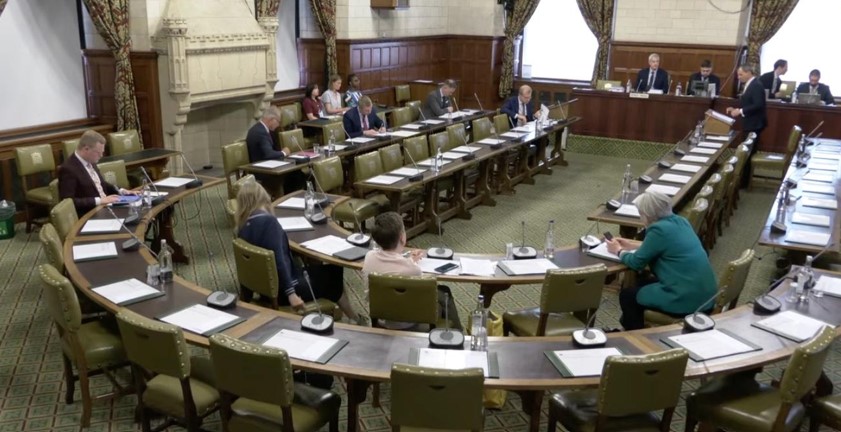The International Energy Agency (IEA) is “undermining efforts on climate change” by guiding governments towards energy decisions that are inconsistent with the Paris Agreement goals, new research suggests.
Established in the 1970s, the IEA is an intergovernmental organisation that aims to support decisions by governments and the private sector to “ensure reliable, affordable and clean energy”.
The IEA’s flagship World Energy Outlook is regarded as one of the most influential publications for energy analysis and insight for policy makers and investors.
However, a new analysis by NGO Oil Change International and thinktank the Institute for Energy Economics and Financial Analysis (IEEFA) argues the majority of IEA-recommended investments in the energy sector are inconsistent with the Paris Agreement goals of keeping global warming “well below” two degrees and striving to limit it to 1.5 degrees.
The report says the IEA’s support for investment into new fossil fuels “is making it much harder to achieve the Paris Agreement”.
According to the report’s authors, the IEA makes investment recommendations against its own estimation that only one third of the world’s fossil fuel reserves may be extracted without exceeding the Paris Agreement’s two degrees warming target. The IEA has repeatedly underestimated the growth of renewable energy.
Greg Muttitt, research director at Oil Change International and co-author of the report, said: “The IEA promotes a vision of the future where the world remains dependent on fossil fuels. As a basis for policy and investment decisions, this is in danger of becoming a self-fulfilling prophecy.”
IEA Scenarios
Every year, the IEA publishes different scenarios anticipating energy demand and use, as the world strives to move away from fossil fuels.
But according to Oil Change International’s analysis, these scenarios are inconsistent with the Paris Agreement goals. The report highlights two specific examples: the Sustainable Development Scenario and the New Policies Scenario.
According to the research, the IEA’s Sustainable Development Scenario would use up the world’s carbon budget to limit global temperature rise to 1.5 degrees by 2023 and exhaust the two degree carbon budget by 2040.
Similarly, Oil Change International claims that the IEA’s most widely promoted scenario, the New Policies Scenario, would burn enough fossil fuels to use up the world’s carbon budget even sooner – respectively exhausting the two degrees target budget by 2034 and that for 1.5 degrees by 2022.
The same scenario also recommends upstream oil and gas investment until 2040 which the report says between 78 and 96 percent of which – or up to $13.8 trillion – are incompatible with the Paris Agreement.
According to the OCI report, the IEA’s Sustainable Development Scenario would see demand for oil fall by only 23 percent from current levels by 2040 and demand for gas will increase – a lifeline for big oil companies.
“Like a fallen lighthouse, the IEA has become a dangerous guide,” the report concludes, adding the scenarios form a low benchmark for oil and gas companies, providing them with a licence to burn more fossil fuels.
Speaking to DeSmog UK, report co-author Muttitt said the research findings highlighted the cosy ties between the IEA and the fossil fuel industry:
“Fossil fuels are very much in the IEA’s organisational DNA and that is also reflected in the very close relationship IEA has with fossil fuel companies. This means, the IEA just comes out with the status quo.”
The IEA’s governance meetings are attended by both government ministers and civil servants as well as the Energy Business Council, whose members include some of the world’s largest fossil fuel companies such as Shell, BP, Total and Chevron.
Dr Jonathan Marshall, head of analysis at the Environment and Climate Intelligence Unit (ECIU) thinktank, also warned that the IEA’s lagging forecasts on renewables growth created “a growing risk that commercial decisions are not based on the facts on the ground”.
“By continuously overestimating the future role of fossil fuels during and beyond the low carbon transition, the IEA risks not only slowing progress, but incentivising investment in dead end projects, which are not compatible with a carbon-constrained future and likely to end up stranded,” he added.
The OCI report goes further, suggesting IEA’s scenarios are used to justify government’s’ “damaging energy decisions”.
The report attributes “some of the world’s most polluting energy developments” to the influence of the IEA’s scenarios, including the expansion of thermal coal mining in Australia, Arctic Ocean oil drilling and oil extraction from Canada’s tar sands.
“As an intergovernmental agency, the IEA should be helping governments achieve their stated climate goals, not hindering them,” the report adds.
The IEA dismissed the suggestion the Sustainable Development Scenario is not in line with the Paris Agreement and that such “deep decarbonisation scenarios (undertaken by the IEA and others) require the deployment of negative emissions technologies to reach the Paris goals”.
It added that the New Policies Scenario did not “represent the IEA’s prediction of the future, let alone the Agency’s recommendation or endorsement” nor was it “forecasting the future”.
The statement added: “The clear message from the New Policies Scenariois that current and announced policies, including Nationally Determined Contributions under the Paris Agreement, result in emissions reductions that are ‘far from enough to avoid severe impacts of climate change’ and will very quickly use up the global carbon budget.
“Looking at the New Policies Scenario in comparison with the Sustainable Development Scenario clearly shows the gap between what policies have already been implemented or proposed and the policies needed to actually meet agreed long-term climate, pollution and energy access goals.”
Conflict of Interest
The “damaging” impact of the IEA’s scenarios is exacerbated by the way the organisation uses its far-reaching communication channels, the report argues.
According to the analysis, the IEA devotes about 80 percent of its communication efforts, including through its flagship annual publication World Energy Outlook (WEO), to promote its business-as-usual New Policies Scenarios.
Co-author Muttitt pointed to the extensive influence the fossil fuel yields over the WEO.
According to the report, at least two of last year’s WEO authors were on secondment from Shell with the oil company still paying their salaries.
Muttitt added that other people who had previously worked for oil companies had been involved in writing the WEO but he was unable to confirm whether they were on secondment.
“That clearly looks like a conflict of interest within the IEA and it undermines the organisation’s ability to provide impartial information,” he said.
The report’s authors have called on the IEA to develop a scenario that is aligned with the aspirational Paris goal to pursue efforts to keep global temperature rise to 1.5 degrees. They have also demanded it is made the World Energy Outlook main’s scenario.
Muttitt said he was “confident” in the organisation’s ability to reform:
“It has a status and a credibility that I don’t think anyone else can easily match. People will continue to turn to the IEA first for energy analysis and I see reform as both necessary and possible.
“I repeatedly hear investors venting their frustrations that the IEA is not publishing the scenarios they need to test their portfolio against the Paris goals. This might help things to change.”
The IEA defended its approach, saying the World Energy Outlook was written and reviewed by “a broad range of contributors” including “staff on loan from government agencies or the private sector”.
It added: “The IEA is not beholden to any industry or any outcome. IEA analysis covers all fuels and all technologies in an impartial manner. The latest IEA Ministerial Meeting explicitly backed the IEA modernisation strategy, which includes to turn the IEA into a global clean energy hub, including for energy efficiency.”
Subscribe to our newsletter
Stay up to date with DeSmog news and alerts







